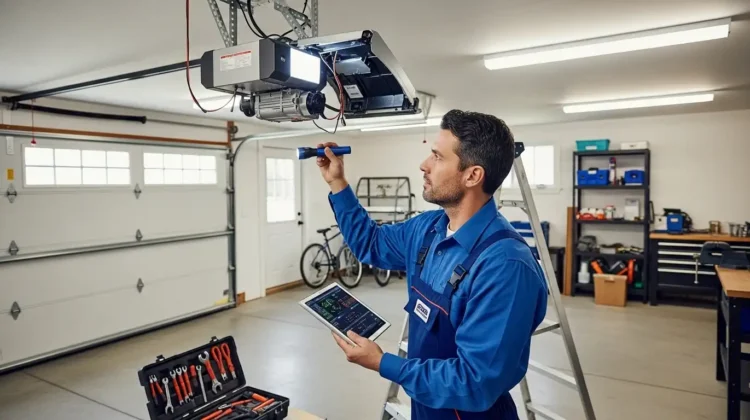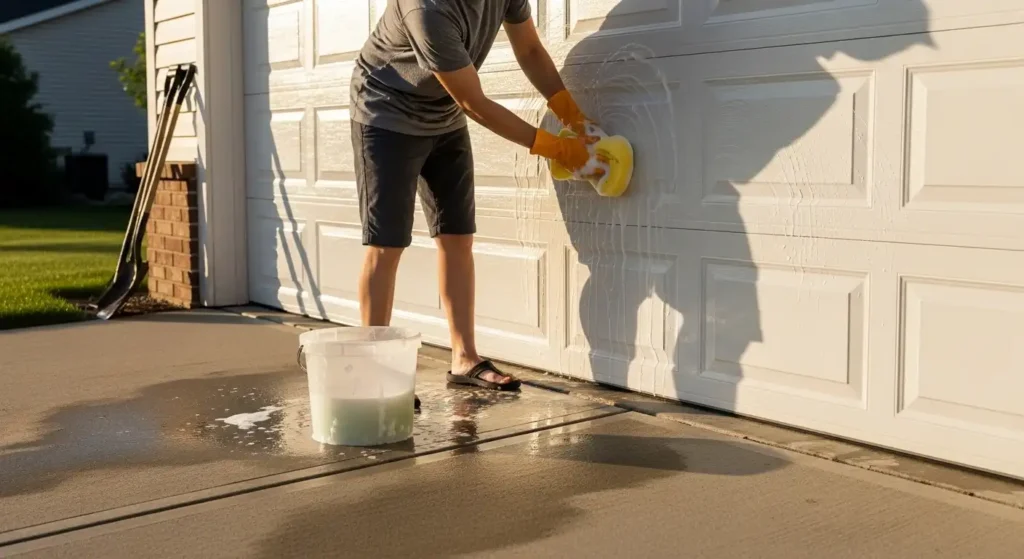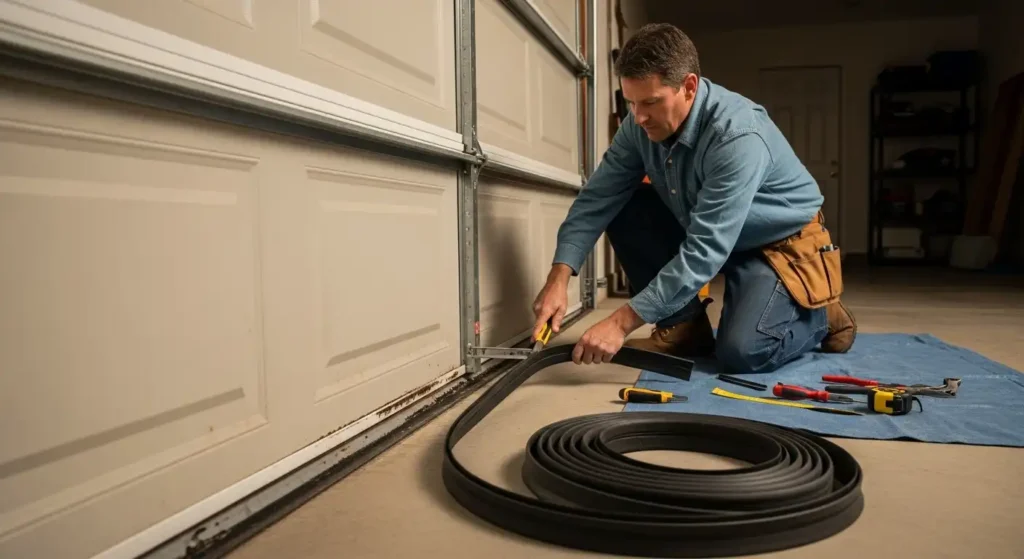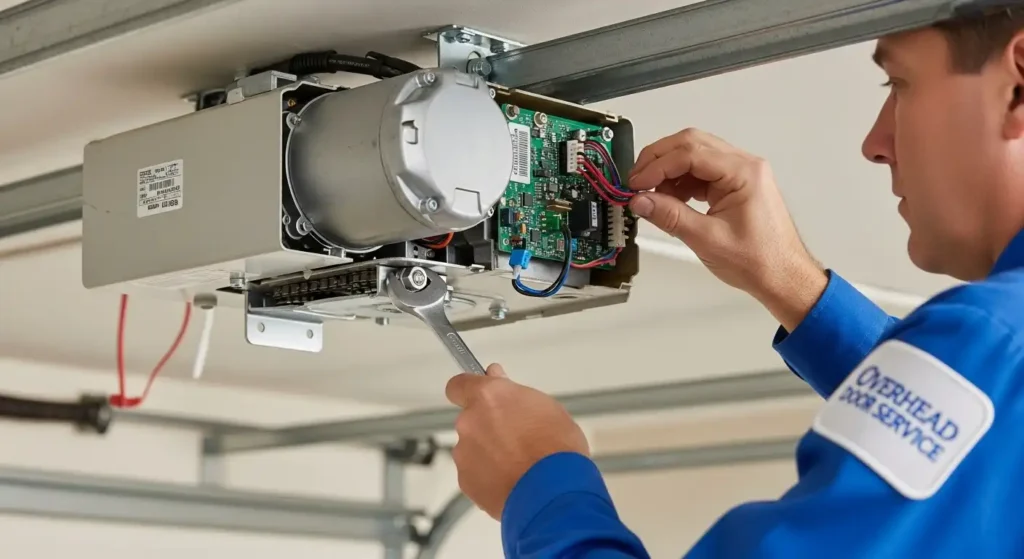
Your garage door is one of the hardest-working systems in your home — opening and closing hundreds of times each year. Yet, it’s often taken for granted until something goes wrong. The good news is that with consistent care and a few smart upgrades, you can significantly extend your garage door lifespan and avoid costly repairs or replacements. In this guide, we’ll explore proven maintenance steps and long-term strategies that keep your door running smoothly for decades.
Why Extending Your Garage Door’s Lifespan Matters
A garage door typically lasts between 15 and 30 years, depending on its quality, materials, and how well it’s maintained. However, factors like weather exposure, poor lubrication, and neglected hardware can drastically shorten that timeline. Replacing a garage door can cost thousands of dollars, so maintaining it isn’t just about convenience — it’s about protecting your investment and ensuring safety for your family.
Whether you use your garage daily or occasionally, these small, consistent actions can make a big difference. By focusing on regular upkeep, balance adjustments, and upgrading worn-out parts, you’ll not only improve performance but also extend your garage door lifespan for many additional years.
1. Keep It Clean to Prevent Rust and Corrosion

Dirt, salt, and moisture are among the biggest enemies of your garage door. When left untreated, they can cause rust on steel components and weaken wooden panels. Cleaning your garage door every few months helps preserve its finish and structural integrity.
- Use a mild detergent and soft cloth to wash both sides of the door.
- Rinse thoroughly to remove soap residue.
- Apply a protective wax or sealant to painted or metal doors for added defense against moisture.
If your door is made of wood, check for peeling paint or cracks. Refinishing or repainting wooden doors every two to three years keeps them looking fresh and prevents water damage. For aluminum or steel doors, consider anti-corrosion coatings in humid or coastal environments. For more information about long-term maintenance, visit the U.S. Department of Energy’s Home Weatherization Guide to learn how insulation and weatherproofing contribute to garage door durability.
2. Lubricate Moving Parts Regularly
Friction wears down components faster than almost anything else. Keeping hinges, rollers, and springs lubricated ensures smooth operation and reduces noise. Use a silicone or lithium-based lubricant — not grease — as it repels dust and withstands temperature changes better.
- Apply lubricant to metal rollers, hinges, and tracks every three to six months.
- Wipe away excess oil to prevent buildup.
- Don’t forget the torsion springs — a light coating reduces strain on the motor and cables.
Proper lubrication not only helps extend garage door lifespan but also improves safety by preventing parts from seizing up or breaking unexpectedly.
3. Check and Replace Weather Seals

Weather seals at the bottom and sides of your garage door protect against drafts, dirt, and pests. Over time, they can crack or lose flexibility, allowing moisture and cold air inside. Replace worn seals immediately to prevent damage to your door and its internal components.
This simple step also boosts your home’s energy efficiency. Pairing good weather seals with proper insulation can make your garage 10–20 degrees more temperature-stable. To learn more about insulation benefits, read our post on insulated garage doors.
4. Test Door Balance and Alignment
An unbalanced garage door can put extra pressure on the opener and springs, leading to premature wear or even failure. Testing your door’s balance takes only a minute:
- Disconnect the opener by pulling the emergency release cord.
- Manually lift the door halfway and release it.
If the door stays in place, it’s properly balanced. If it falls or rises on its own, the springs may need adjustment. A balanced door operates smoothly and reduces strain on all mechanical parts. For safety, always hire a professional to adjust spring tension — they’re under high pressure and can cause injury if mishandled.
5. Inspect Springs, Cables, and Rollers
Springs and cables do most of the heavy lifting, and when they fail, they can take other components down with them. Inspect them regularly for signs of wear, rust, or fraying. Rollers should spin freely without wobbling or sticking. Replace any worn or cracked rollers immediately.
If your door makes loud noises or shakes while opening, it may be time for a professional inspection. For a comprehensive checklist, see our guide on garage door inspections.
6. Upgrade to Smart Openers and Safety Sensors
Technology can play a huge role in longevity. Smart openers equipped with sensors and automatic shutoff features reduce wear on mechanical parts by optimizing operation. These systems also provide real-time diagnostics, alerting you when maintenance is needed.
Many smart openers include soft-start and soft-stop functions that prevent sudden jerks — protecting the door from unnecessary strain. If you want to learn more about how automation and AI enhance performance, check out our article on future garage door technology.
7. Replace Worn-Out Hardware
Even with good maintenance, parts eventually wear out. Replacing small components early can prevent major repairs later. Common hardware replacements include:
- Worn rollers or hinges that cause loud operation.
- Frayed cables that can snap under tension.
- Loose brackets or track bolts that lead to misalignment.
Keeping up with minor repairs helps you avoid sudden breakdowns and extend garage door lifespan considerably.
8. Inspect the Auto-Reverse and Safety Sensors
Your garage door’s auto-reverse feature prevents accidents by stopping the door if something obstructs its path. Test this feature monthly by placing an object under the door and closing it. The door should reverse immediately upon contact.
Clean the photo-eye sensors regularly with a soft cloth and ensure they’re aligned properly. These small devices are responsible for a major portion of your door’s safety and longevity.
9. Protect Against Extreme Weather
Weather conditions are one of the leading causes of premature wear. Heat, cold, moisture, and wind can each damage your garage door differently. Preparing for seasonal changes — also known as garage door seasonal preparation — helps extend durability and performance year-round.
If you live in a coastal or storm-prone area, consider wind-rated or impact-resistant models. These designs offer extra protection during hurricanes and high winds, keeping your garage safe from structural damage.
10. Schedule Professional Tune-Ups

While DIY care is crucial, professional inspections take longevity to another level. Technicians have specialized tools to measure spring tension, check motor load, and detect minor imbalances that aren’t visible to the untrained eye. Scheduling a tune-up once or twice a year ensures all parts work in harmony and prevents small issues from turning into big repairs.
Many professionals also test opener efficiency, lubricate hard-to-reach components, and inspect for early signs of corrosion or electrical failure. Think of it as a full wellness check for your garage door system — one of the most effective ways to extend garage door lifespan safely and affordably.
11. When to Replace Instead of Repair
Even with great maintenance, every garage door eventually reaches the end of its life. If your door has multiple cracks, rusted panels, or outdated safety features, replacement may be the smarter investment. Newer doors offer better insulation, quieter operation, and advanced security features that older models can’t match.
For expert guidance, consult a certified garage door technician to evaluate whether repairs or replacement make the most sense for your situation.
Final Thoughts
A garage door is more than just an entry point — it’s a key part of your home’s security, comfort, and curb appeal. By taking proactive steps to extend your garage door lifespan, you can enjoy reliable performance, lower maintenance costs, and greater peace of mind. From lubrication and balance checks to weatherproofing and smart upgrades, these simple habits make a lasting difference.
For more professional advice, explore our detailed guides on garage door inspections and insulated doors to keep your system in peak condition for years to come.
